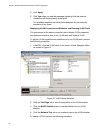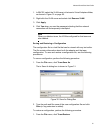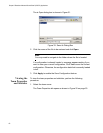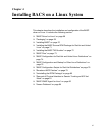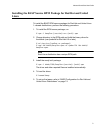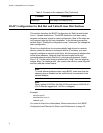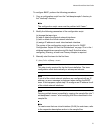
Chapter 4: Installing BACS on a Linux System
68
BASP Driver for Linux
On newer Distributions and Kernels, it may be necessary to remove the
BASP Driver for Linux
BASP is a kernel module designed for 2.4.x kernels that provides load-
balancing, fault-tolerance, and VLAN features. These features are
provided by creating teams that consist of multiple NIC interfaces. A team
can consist of 1 to 8 NIC interfaces and each interface can be designated
as primary or hot-standby (SLB team only). All primary NIC interfaces in a
team participate in Load-balancing operations by sending and receiving a
portion of the total traffic. Hot-standby interfaces take over in the event
that all primary interfaces have lost their links. In addition, VLANs can be
added to a team to allow multiple VLANs with different VLAN IDs. A virtual
device is created for each VLAN added.
There are three BASP modes:
SLB mode. This mode works with all Ethernet switches without
configuring the switch ports to any special trunking mode. BASP
supports Smart Load Balance (SLB™), Generic Trunking and IEEE
802.3ad Link Aggregation. In SLB and 802.3ad modes, all NICE
drivers must support Broadcom NIC Extension (NICE).
Generic trunking mode. This mode does not require NICE and can
work with any NIC; however, it requires the Ethernet switch to support
the technology and be properly configured. This mode is protocol-
independent and all traffic should be load-balanced and fault-tolerant.
802.3ad mode. This mode requires NICE drivers and Ethernet
switches supporting IEEE 802.3ad Link Aggregation. This mode is
protocol-independent and all traffic is load-balanced and fault-tolerant.
All the physical interfaces in the 802.3ad teams are defaulted to be
LACP active. A 802.3ad team requires that all of the member NICs
support NICE. All of the member NICs, once in the 802.3ad team, will
be set with the same MAC address.
BASP also provides remote management through the SNMP protocol.
This package is installed separately (see “BASP SNMP Agent for Linux”
on page 82).



